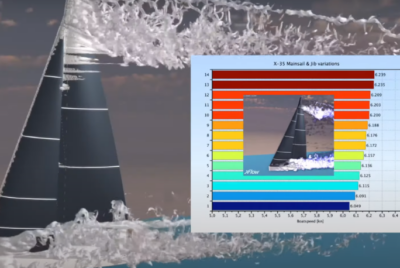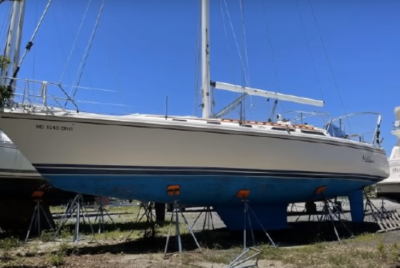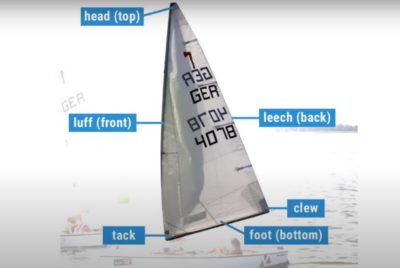Sail Drones: Revolutionizing Ocean Exploration and Research
I’m excited to share insights about a revolutionary technology that’s transforming the way we explore and study the vast oceans – sail drones. These uncrewed surface systems have been making waves in the field of oceanic research, offering cost-effective and efficient solutions to longstanding challenges. In this article, I’ll delve into the incredible capabilities of sail drones and their contributions to ocean exploration and understanding.
Advancements in Uncrewed Surface Systems
In recent years, the field of ocean exploration has witnessed a remarkable transformation, all thanks to advancements in uncrewed surface systems. These innovations are not only addressing the urgent needs of climate change research but also promoting sustainability in our interactions with the oceans. Traditional methods of ocean mapping and exploration have been limited by their high costs and inefficiencies. However, the introduction of small mother ship-deployed uncrewed vessels and larger shore-launched vessels has shown promising potential for more economical and effective approaches.
Cost-Effective and Efficient Approaches
One of the most compelling aspects of sail drones is their ability to offer cost-effective and efficient approaches to ocean exploration. By overcoming the limitations of traditional methods, these uncrewed vessels are opening new doors for researchers and scientists. The utilization of small mother ship-deployed vessels allows for precise and targeted data collection, reducing the need for extensive resources. Additionally, larger shore-launched vessels provide a broader scope for exploration without compromising on data quality.
Enhanced Mapping and Autonomous Control
The promise of enhanced mapping capabilities is a standout feature of sail drones. These vessels are equipped with advanced technology that enables them to autonomously navigate through the oceans while collecting vital data. From underwater terrain mapping to autonomous underwater vehicle control, sail drones are leading the way in efficient data collection. The ability to perform simultaneous operations further enhances their value, allowing researchers to gather comprehensive information in a single mission.
Importance of Patience and Innovation
While the capabilities of sail drones are undeniably impressive, it’s crucial to exercise patience and foster innovation in their development. Prematurely overhyping these technologies can lead to unrealistic expectations. Instead, a balanced approach that focuses on diligent research and innovation is essential for achieving comprehensive ocean coverage. As an advisor, I emphasize the importance of nurturing these technologies over time to ensure their long-term success in advancing our understanding of the oceans.
Saildrone Technology and Oceanic Observations
One standout example of the impact of sail drones is their role in oceanic and atmospheric observations. The Saildrone, an autonomous sailing drone, has emerged as a game-changer in the field. With an impressive speed range and an astonishing range of over 16,000 nautical miles, these drones are capable of conducting adaptive sampling at a fraction of the cost associated with traditional research ships.
The OCS (Ocean Climate Stations) project has harnessed the power of Saildrones for oceanic data collection. Notable missions such as TPOS (Tropical Pacific Observing System) involve deploying Saildrones to gather valuable data across different regions of the Pacific Ocean. These missions play a crucial role in addressing critical gaps in ocean research, providing real-time data that is accessible to researchers through dedicated platforms.
Saildrones’ Resilience in Extreme Conditions
The resilience of sail drones in extreme conditions has been demonstrated in remarkable instances. For instance, in the face of a Category 4 hurricane, the Saildrone Explorer SD 1045 showcased its robust design and construction. Equipped with a carbon-fiber sail built to endure hurricane conditions, this unmanned research boat was armed with meteorological and oceanographic instruments powered by renewable sources. Its autonomous nature allowed it to endure harsh conditions and operate remotely for extended periods, contributing to continuous data collection even in the harshest of environments.
Exploring Marine Wildlife and Behavior
Saildrones are not only advancing our understanding of oceanic phenomena but also uncovering the mysteries of marine wildlife. Take, for instance, the enigmatic migration patterns of great white sharks. Autonomous sailboats equipped with sensors and cameras have embarked on journeys to uncover the secrets of these creatures. These sail drones, as they journey from California’s Bay Area to the White Shark Cafe, provide invaluable insights into the behavior and activities of great white sharks.
Saildrones in Great Lakes Fishery Research
The application of sail drones extends beyond oceans to freshwater bodies like the Great Lakes. Collaborative efforts between organizations like the U.S. Geological Survey and Saildrone, Inc. have resulted in missions that collect essential data for fishery research. Equipped with acoustic technology, these autonomous vehicles gather data on fish distribution and density. This information aids in understanding the impact of factors like invasive species and engine noise on fish populations, thereby supporting sustainable management of the Great Lakes fishing industry.
Enhancing Hurricane Forecasting and Research
Uncrewed ocean gliders and Saildrones are playing a pivotal role in enhancing hurricane forecasting and research. Given the substantial impacts of hurricanes on human life and the economy, improving forecasts and mitigating consequences are imperative. While progress has been made in hurricane track forecasts, challenges remain in accurately predicting intensity changes. The integration of advanced technology, such as ocean gliders and Saildrones, contributes to a deeper understanding of atmospheric circulation, storm dynamics, and air-sea interactions. This enhanced knowledge holds the key to more precise intensity forecasts, allowing communities to prepare better for impending storms.
Conclusion
In conclusion, sail drones represent a remarkable leap forward in ocean exploration and research. Their versatility, cost-effectiveness, and ability to withstand extreme conditions make them invaluable tools for scientists and researchers. As an enthusiast and advisor, I encourage continued investment in research and innovation to unlock the full potential of sail drones. By doing so, we are not only expanding our understanding of the oceans but also contributing to the sustainable management of Earth’s most precious resources.
FAQs
What is the range of a typical Saildrone?
Saildrones boast an impressive range of over 16,000 nautical miles, allowing them to cover vast distances during their missions.
How do Saildrones contribute to hurricane research?
Saildrones play a crucial role in hurricane research by collecting real-time data on atmospheric conditions, ocean dynamics, and more, contributing to enhanced forecasting and understanding of these powerful storms.
What makes Saildrones suitable for fishery research in the Great Lakes?
Equipped with acoustic technology, wind, and solar-powered Saildrones collect data on fish distribution and density, aiding in assessing the impact of various factors on fish populations.
How do Saildrones withstand extreme weather conditions?
Saildrones like the SD 1045 are designed with robust construction, including carbon-fiber sails built to endure hurricane conditions, allowing them to operate autonomously for up to a year in harsh environments.
What role do Saildrones play in uncovering marine wildlife behavior?
Saildrones equipped with sensors and cameras are on a mission to uncover the enigmatic migration patterns and behavior of great white sharks, shedding light on their activities in the Pacific Ocean.




